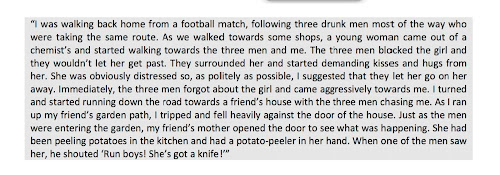STEP 1: Recreate the story trying to guess what happened...
STEP 2: Read the real story and discuss the differences and similarities that you find.
STEP 3: YOUR TURN!!!
- Choose six words or short phrases about a memorable personal experience
- Reconstruct the story
- Pay attention to the guidance provided about narrative writing style






